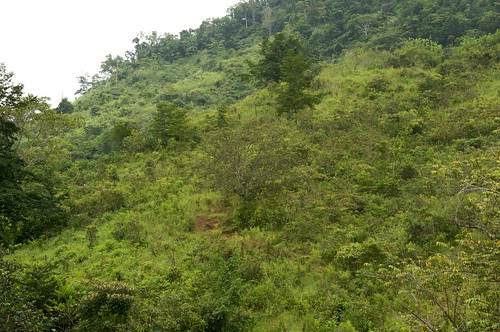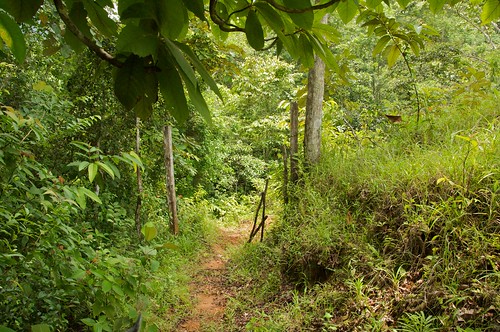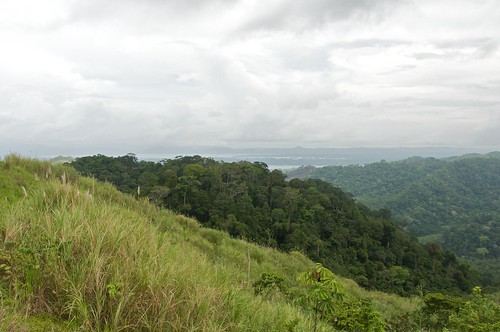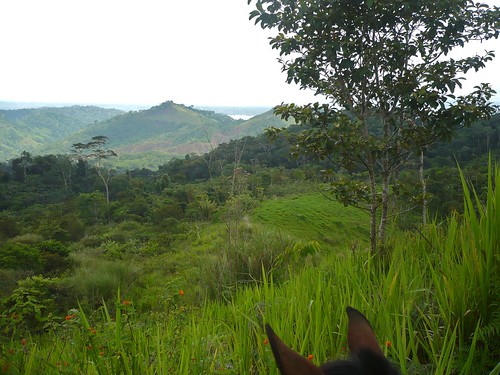Exploring the farm
In the last post you saw the entrance to the farm and an aerial like picture of the area close to the entrance taken from a hill. Now come along to see some more of the farm.
As a side note I should mention that we found this land sometime in April and went there first in May. It’s September now that I write about all this. So not all the pictures I use in a particular post are from the same day. We’ve gone there several times to explore more and more of the land and I choose pictures based on how well they are suited to tell the story, which is not necessarily in chronological order.
Behind the abandoned shed there is a corral. It doesn’t look that bad. The fence is made of tropical hardwood and all the posts are simply rammed into the ground. There are termites and other wood eating insects in Panama but some wood species are either to hard or too bitter so those insects avoid them. I guess the wood used for the fence is Nispero. Nispero trees were harvested for latex and some older trees on the farm have the typical cylindrical cuts into the bark. In Panama many fences are made of Nispero wood because humidity and insects don’t affect it although in direct contact with the soil.
<div style="text-align:center;"> </div>
</div>
From the shed we can go uphill and around the corner to see more of the farm. As you can see there is regrown vegetation everywhere and the pasture is slowly loosing its ground.
<div style="text-align:center;"> </div>
</div>
There is an old mule roaming the farm. She got left behind. That’s not a big problem for her as there is water and food in abundance. It’s kind of a great way to retire.
Worth mentioning is that the picture shows as well great pasture. This is not ordinary gras that just grows there. It has been planted as food for cattle.
<div style="text-align:center;"> </div>
</div>
We are now approaching the first door and leaving the first section. I’m not sure how many sections the farm actually has. We need to figure that out and repair all the internal fences step by step.
<div style="text-align:center;"> </div>
</div>
After a while we have to climp a steep slope with extremely grown vegetation. I remember it wasn’t easy for the horses and we had to guide them on foot several times. All the more we were sweating. Imagine how it is on a day with about 35 degrees Celsius (95 degrees Fahrenheit) in direct sunlight and a lot of humidity combined with walking uphill.
<div style="text-align:center;"> </div>
</div>
After a while we came to the top where a fresh breeze greeted us. You can’t imagine how you welcome even the slighted bit of moving air in such a situation. Thankfully it was a bit more than just a bit of moving air. While we were enjoying the view our shirts started to dry and that made it even more pleasant to be on top of that hill. The elevation is about 450 meters.
In the background you can see a small part of the Bayano lake, which is part of a large hydroelectric project.
<div style="text-align:center;"> </div>
</div>
Looking to the left we can see more pasture. The neighbor’s land starts at the treeline in the background. On the other side it goes downhill towards another river. At some points up there one can hear the sound of a waterfall.
<div style="text-align:center;"> </div>
</div>
Looking down from the hill there is more pasture. In the background one can see a bit of the dirt road we traveled on to get close to the farm.
<div style="text-align:center;"> </div>
</div>
| Previous | 06 Sep 2009 | Next |
This article has been posted to social media sites. There might be comments. Just follow the links:








